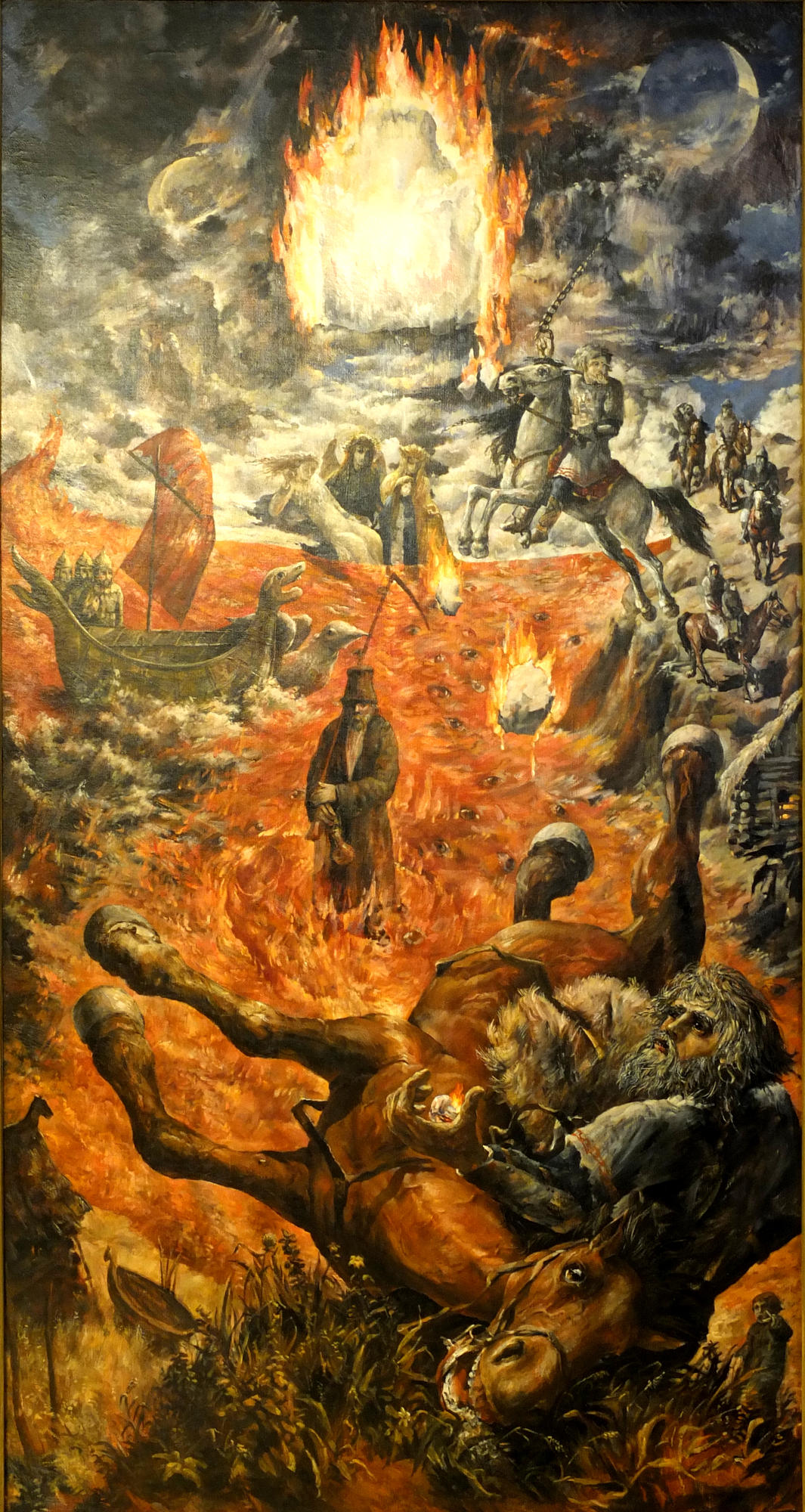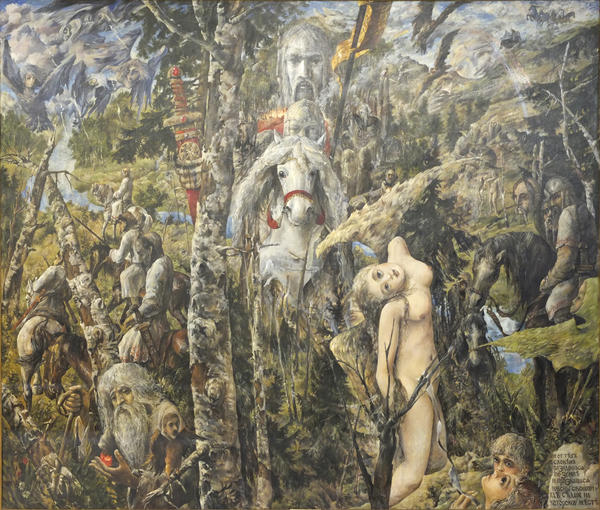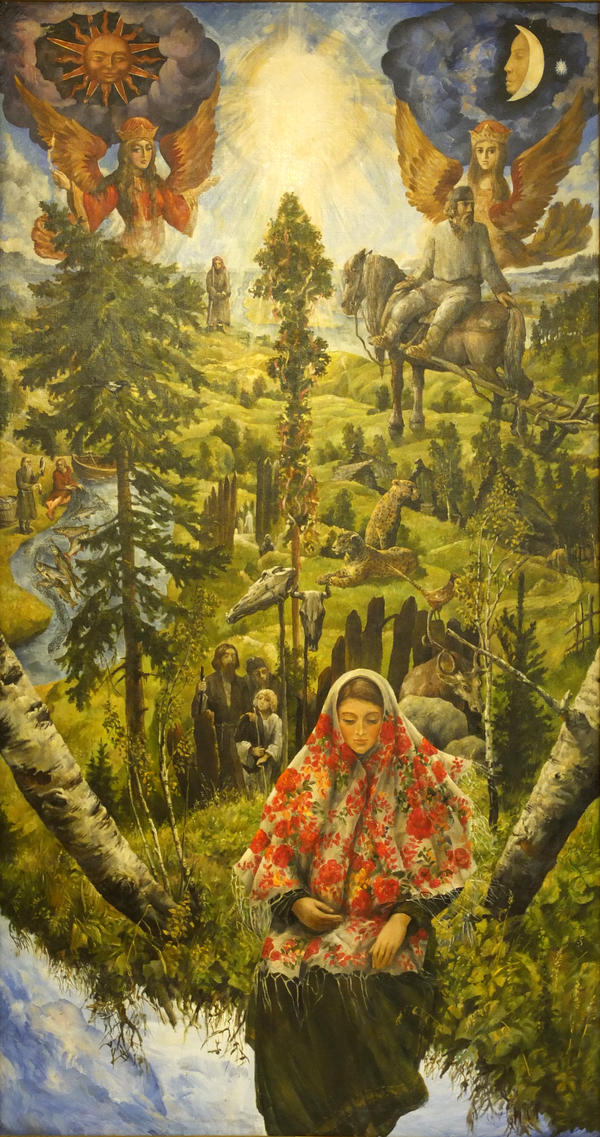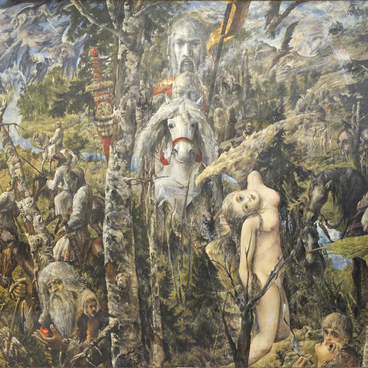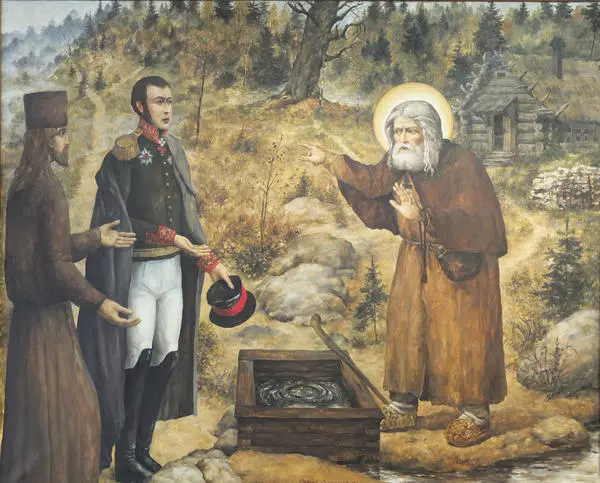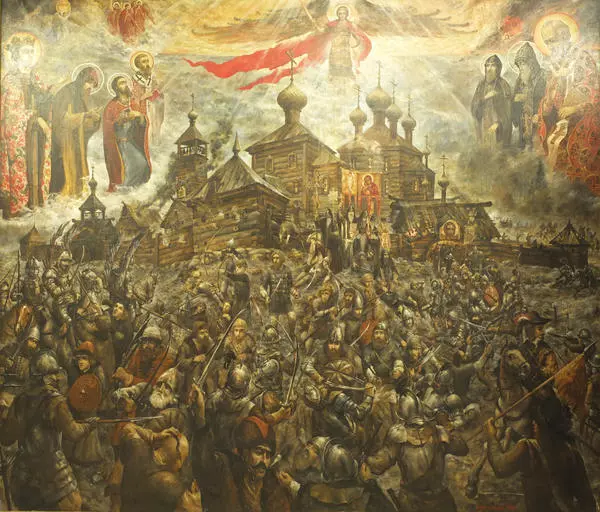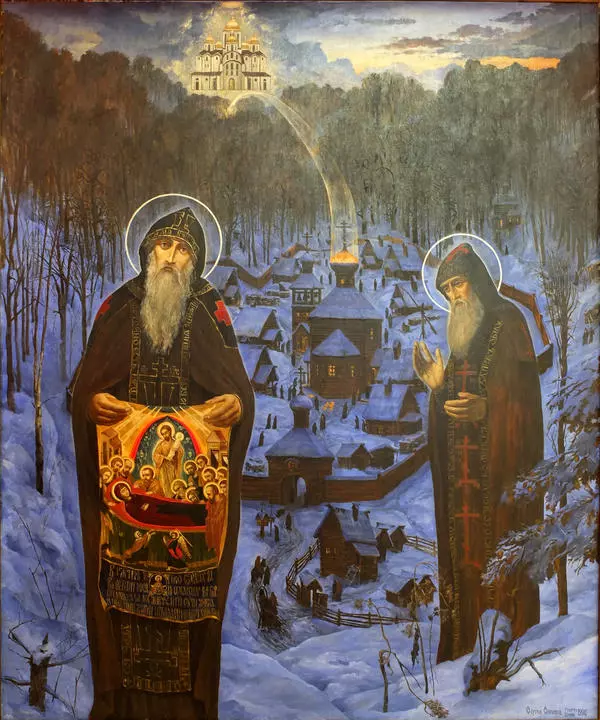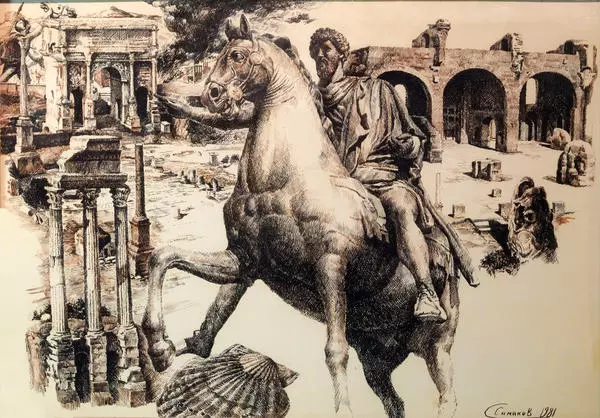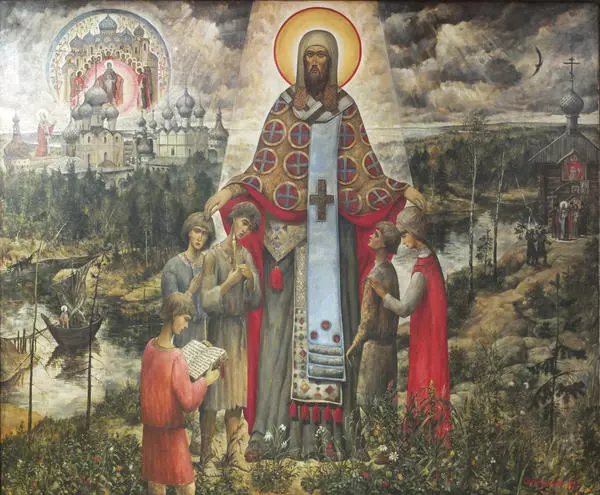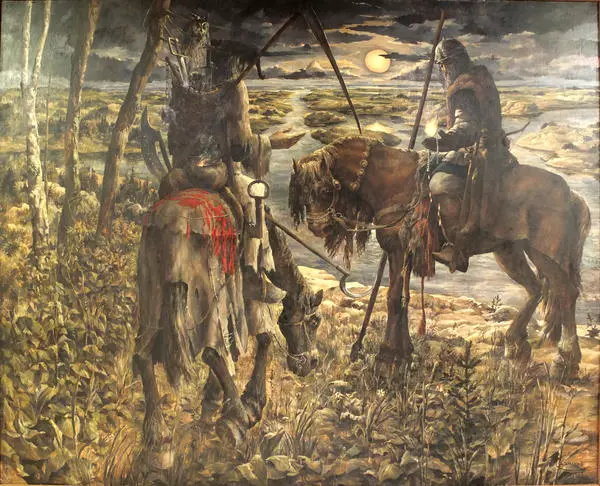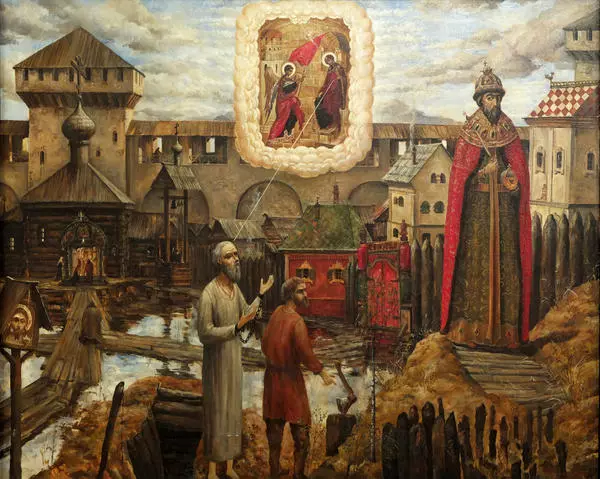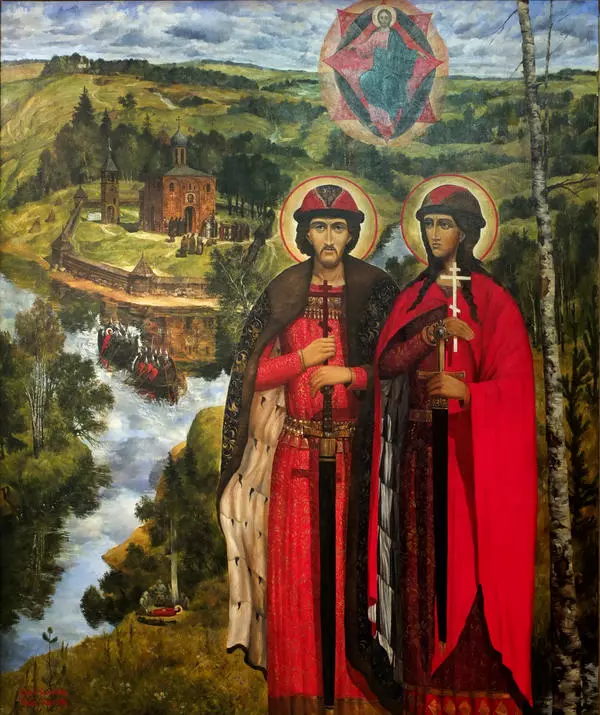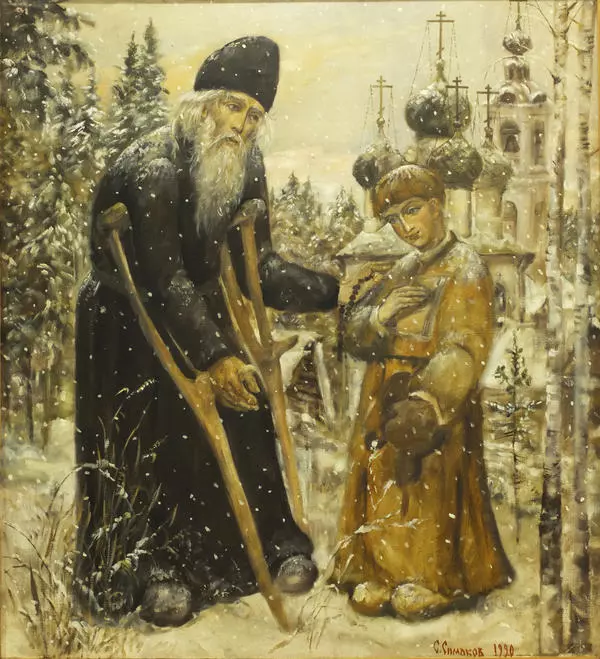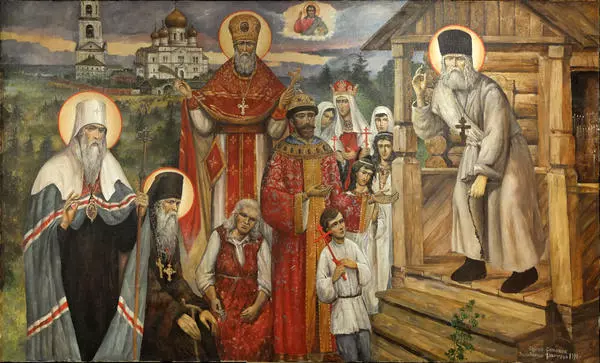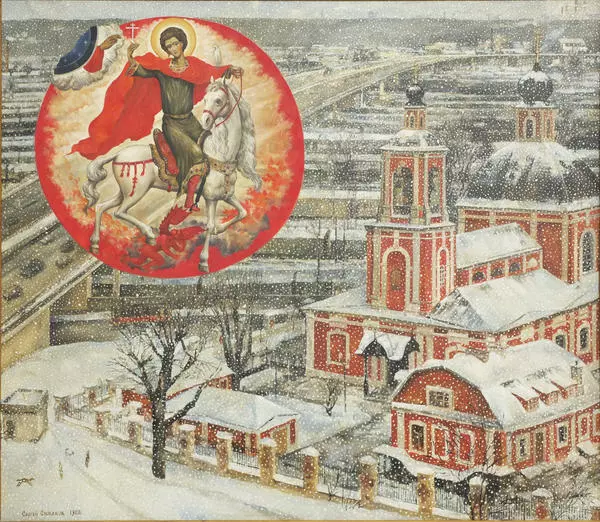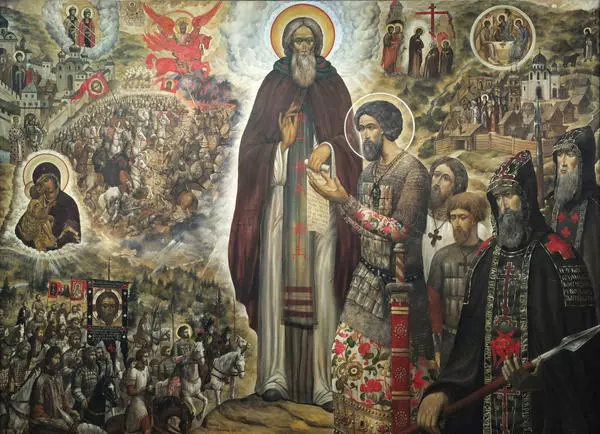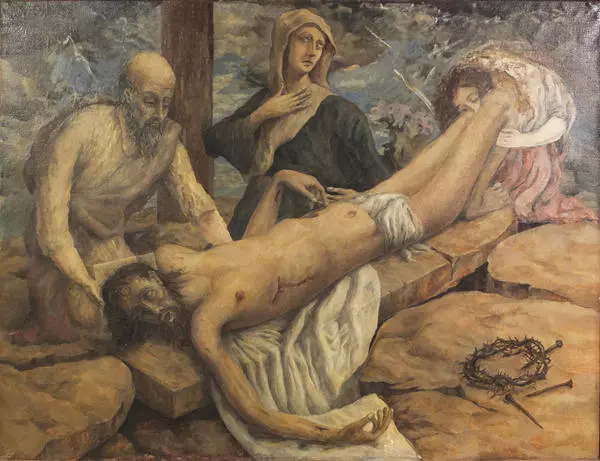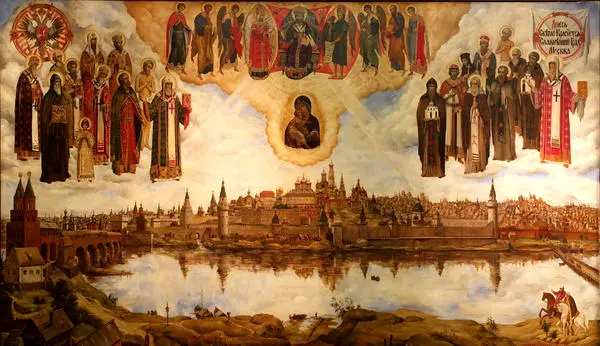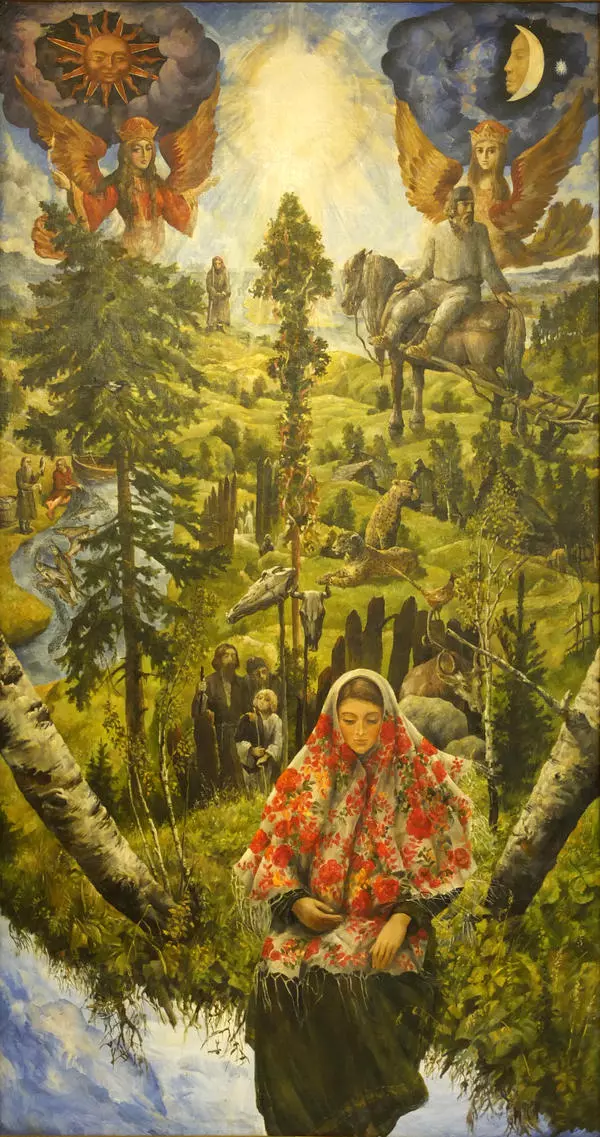Artist Sergey Simakov was born in Moscow in 1949; at the same place in 1972 he graduated from Moscow Institute of Architecture (MIA). From an early age he was fond of painting; in 1970 he created impressionist and surrealistic paintings. At that time he entered the association Twenty Moscow Artists — a group of Soviet artists-non-conformists who hosted sell-out exhibitions of semi-forbidden art in the cellar of house No.28 in Malaya Gruzinskaya Street.
However, as early as in 1980 Sergey Simakov got disappointed in avant-garde. He drew his focus towards orthodox: baptized and got married with his spouse. At the same time the artist bought a house for summer workshop in Uglich village Zagajnovo. Nearby is Church of Archangel Michael in the pine wood — primarily Simakov visited it as a parishioner, helped with household matters to reverend John and after the death of his wife in 2005 he took the monastic vows and became an abbot of the church under the name Raphael.
However, as early as in 1980 Sergey Simakov got disappointed in avant-garde. He drew his focus towards orthodox: baptized and got married with his spouse. At the same time the artist bought a house for summer workshop in Uglich village Zagajnovo. Nearby is Church of Archangel Michael in the pine wood — primarily Simakov visited it as a parishioner, helped with household matters to reverend John and after the death of his wife in 2005 he took the monastic vows and became an abbot of the church under the name Raphael.
